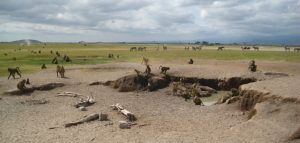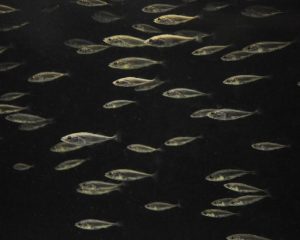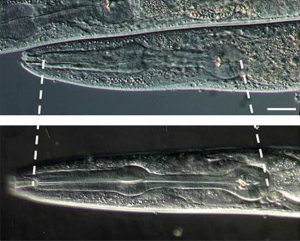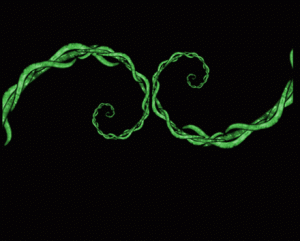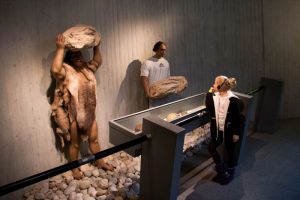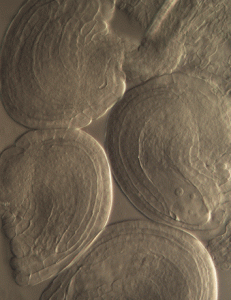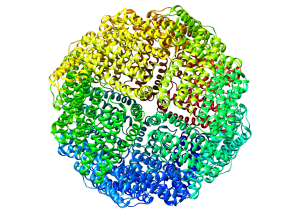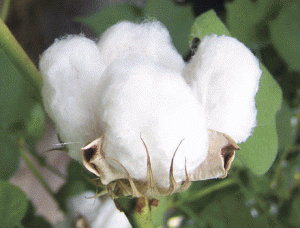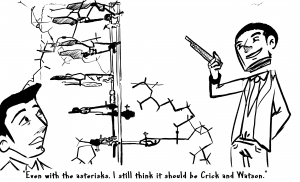Enter your address to receive notifications about new posts to your email.
Science & Publishing
-
Science & Publishing
Selfish self-fertilization hampers adaptation
When finding a mate is difficult, self-fertilization offers a tempting solution by increasing the number of offspring an individual can produce. But although “selfing” provides a stopgap solution when mates are scarce, it is frequently an evolutionary dead end; when environmental conditions change, species with high selfing rates seem prone to extinction. In an article…
-
Science & Publishing
How bacteria dodge new antibiotic candidates
Antibiotics, a vital tool for fighting infections, were originally products of nature—the first antibiotic was serendipitously discovered in mold contaminating a bacterial culture. As antibiotic resistance becomes an increasingly serious threat, scientists are attempting to wring another type of pathogen-fighting drug from the wild: antimicrobial peptides. Antimicrobial peptides, or AMPs, are found in almost every…
-
Science & Publishing
Fecal alchemy: Turning poop into genomics gold
When it comes to genotyping technology, poop genetics is stuck in the 1990s. While most geneticists are now awash in genome-scale data from thousands of individuals, those who depend on fecal and other non-invasively collected samples still rely on old-school, boutique panels of a dozen or so genetic markers. But feces — along with fur,…
-
Science & Publishing
Fish with robot friends: linking genes to behavior
The relative contributions of nature and nurture to behavior are a perennial source of dispute. That there is a genetic component is clear, but frustratingly, only a handful of specific genes are known to directly influence behavior in vertebrates. In the June issue of GENETICS, Greenwood et al. describe how they pinned down one of…
-
Science & Publishing
Stretchy cells underlie organ development
Animals’ complex body plans come at a cost: their development is elaborate and must be delicately controlled. One critical aspect of development is size and shape control—every organ needs to fit in its place. The process requires the orchestration of a dizzying number of pathways, and understanding even a single component is far from trivial.…
-
Science & Publishing
Jamborees of GENETICS Authors
By guest authors Robert K. Herman, Gabriela Huelgas-Morales, and David Greenstein This summer, GSA is throwing a genetics shindig–The Allied Genetics Conference (TAGC)–to bring geneticists from multiple disciplines together to promote interaction and cross-fertilization among fields. In a way, this meeting extends a current trend: GENETICS authors have been aggregating for some time. Those of us…
-
Science & Publishing
Inbred Neanderthals left humans a genetic burden
The Neanderthal genome included harmful mutations that made the hominids around 40% less reproductively fit than modern humans, according to estimates published in the latest issue of GENETICS. Non-African humans inherited some of this genetic burden when they interbred with Neanderthals, though much of it has been lost over time. The results suggest that these harmful…
-
Science & Publishing
June GENETICS Highlights
Check out the June issue of GENETICS by looking at the highlights or the full table of contents! This Month’s Centennial Articles Joshua Lederberg on bacterial recombination, pp. 613–614 Mark Johnston GENETICS Editor-in-Chief Mark Johnston introduces Joshua Lederberg’s GENETICS Classic Gene recombination and linked segregations in Escherichia coli, which describes the first genetic analysis of bacteria. Lederberg’s discovery that…
-
Science & Publishing
How worms that pump iron get fat
Despite its reputation as an innocent essential mineral, excessive iron intake can be poisonous, and maintaining the proper amount within our cells requires a molecular balancing act among several biochemical pathways. Even at levels that are not overtly toxic, iron overload in humans has been associated with an increased risk of obesity and related conditions,…
-
Science & Publishing
New in G3: Cotton, Candida, and Chlamydomonas
Check out the June issue of G3! Investigations Sdt97: A Point Mutation in the 5′ Untranslated Region Confers Semidwarfism in Rice Jiping Tong, Zhengshu Han, Aonan Han, Xuejun Liu, Shiyong Zhang, Binying Fu, Jun Hu, Jingping Su, Shaoqing Li, Shengjun Wang, and Yingguo Zhu G3 June 2016 6:1491-1502; Early Online April 29, 2016 doi:10.1534/g3.116.028720 Abstract…
-
Science & Publishing
Credit where it isn’t due
We biologists can be a credit-hungry lot. Getting a paper into press that shows we were first to make a discovery best satisfies our appetite for affirmation. But has the trend to slice each piece of credit ever finer gone too far? (While perhaps easy for a senior member of the field like me to…


![Helonias bullata, a species threatened with extinction. Its low genetic diversity, a factor contributing to its decline, may have been caused by a high rate of self-fertilization. By Hedwig Storch (Own work) [CC BY-SA 3.0 (http://creativecommons.org/licenses/by-sa/3.0)], via Wikimedia Commons.](https://s36063.pcdn.co/wp-content/uploads/2016/07/1024_Helonias_bullata_Arktisch-alpiner_Garten_Chemnitz-0931-e1467579681557-300x197.jpg)
![Molecular model of penicillin, the first antibiotic discovered. Later, antimicrobial peptides were also found to have antibiotic properties. By Science Museum London / Science and Society Picture Library [CC BY-SA 2.0 (http://creativecommons.org/licenses/by-sa/2.0)], via Wikimedia Commons.](https://s36063.pcdn.co/wp-content/uploads/2016/06/Molecular_model_of_Penicillin_by_Dorothy_Hodgkin_9663803982-300x212.jpg)
